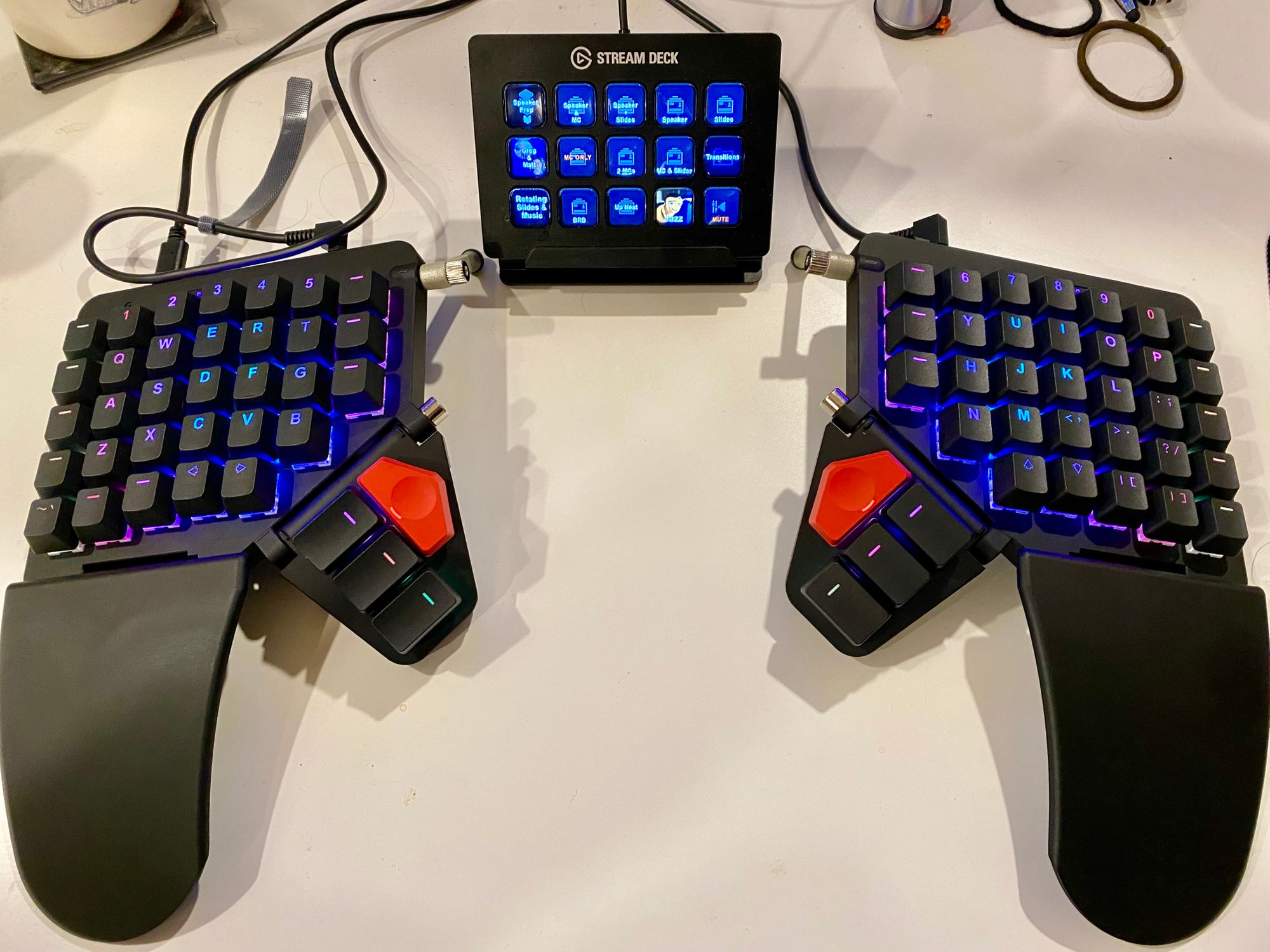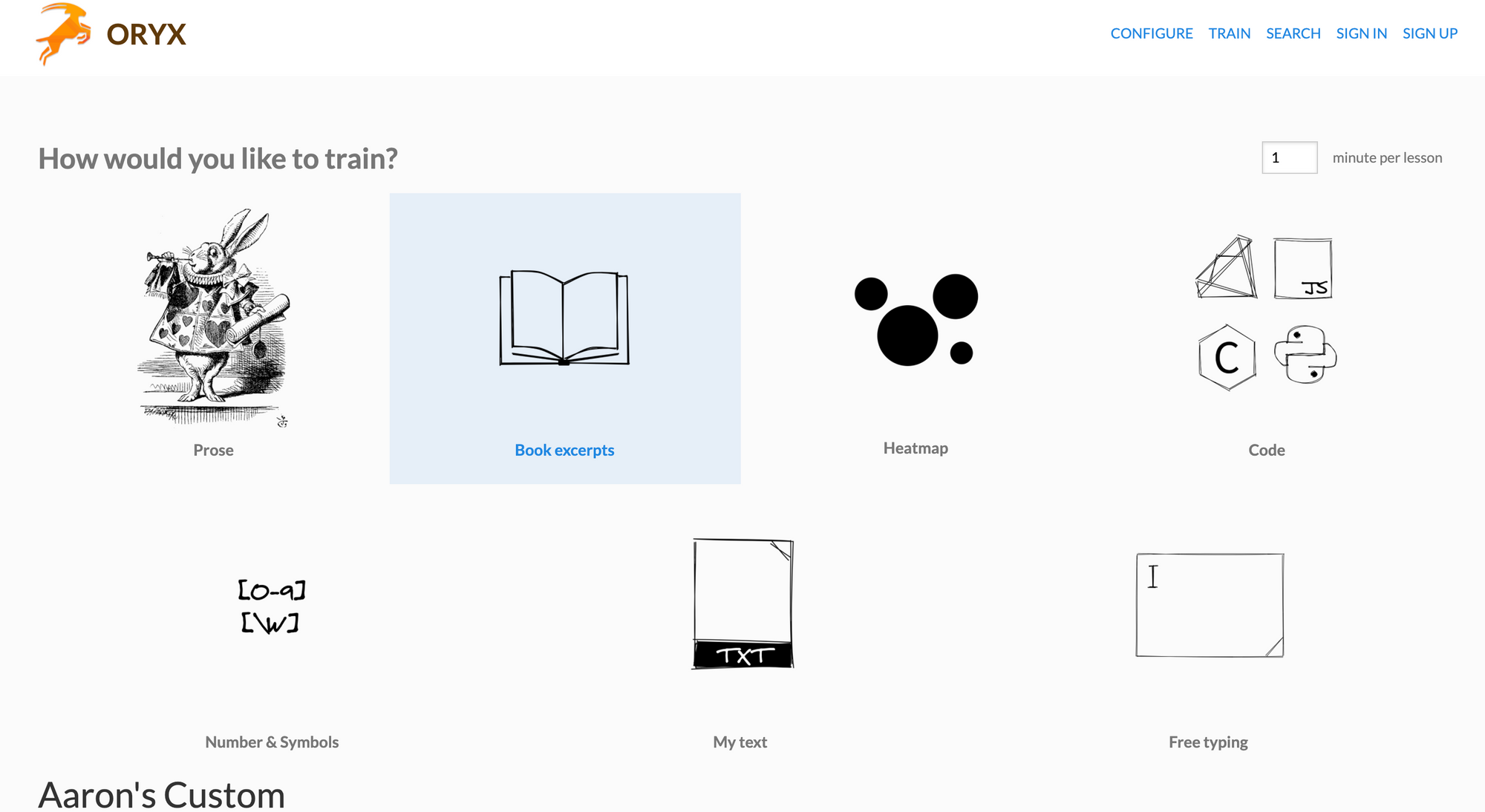Learning All Over Again
This is the start of a probably short, but likely frequently posted series where I learn how to type all over again. Don't worry, I haven't injured myself, I've just bought a new keyboard.

This is the start of a probably short, but likely frequently posted series where I learn how to type all over again. Don't worry, I haven't injured myself, I've just bought a new keyboard.

For anyone deep into the mechanical keyboard world this won't look too bizarre, and to anyone that has no idea or care about the difference between "Cherry MX Brown" or "Kailh Gold" this probably looks more like the controls of its namesake, MOONLANDER. I cannot resist typing the name in all caps, it deserves that gravitas. This is a variant on the popular open source keyboard format, Ergodox. In fact, it is designed by the same folks behind the ErgodoxEZ and is intended to represent it's next iteration with a slightly redesigned thumb pad area (that now swivels and adjusts for height and hand size) and built in removable wrist rests. It has many pretty lights and for those that care, Kailh Box White (clicky) switches.
Mainly I decided to jump in on such a Sci-Fi looking keyboard for ergonomic reasons. As the name suggests, that's what this platform was designed for. The most noticible features are the split keyboard design that allows me to keep my hands comfortably shoulder distance apart as I type, and the adjustable legs that "tent" the keyboard for a more natural resting position. If you look closely, though, and then look at a regular keyboard, you might notice one other thing; every column of keys is perfectly aligned instead of staggared. In keyboard nerd, we call this ortholinear. The theory here, is that your fingers don't zig-zag when you curl or extend them, so why are your keys like that? This layout should minimize the mount of side-to-side movement of the fingers and (again, theoretically) reduce the repetetive motion strain.
Obviously, though, that's not all that's different about this keyboard. This thing also has fully customizable firmware so that I can configure the actual key layout however I want. All those unmarked keys are some form of the functional keyboard keys like Command and Enter and Space. I have some (Take Z for example) where I can tap it to type normally, but if I hold it down, instead of typing "zzzzz" it acts as the command key (I have other places I can get command, too, just in case I ever have to undo something). There are also lots of programmable options like layers and macros and supermodifier keys, but I really have not gotten deeply into that yet because everything else about it means I am an AWFUL typist on this thing.
Seriously. I went from typing over 100 words per minute to about 20 right out of the box. It's humbling in a lot of ways. This is not a byproduct of a weird keyboard, though, it's mainly the coming home to roost of oh-so-many bad typing habits exacerbated by a keyboard designed around keeping your hands on the home-row.
My dirty secret is that I never really learned how to type properly, I mostly just committed the keyboard into muscle memory and let my hands type however they want regardless of what finger was supposed to hit what letter. I rarely even used my pinkies for anything other than special keys like Shift and Enter. But now all my keys are spread out and the special keys are a bit rearranged. I can't hit "B" with my right hand anymore. The ortholinear design means that everything that was offset that I may have hit with the wrong finger because it was halfway between one or the other anyway, is now perfectly designed... if I use the fingers I am supposed to use to press them. So like an athlete perfecting their form, I have to go back to basics.

On the upside, the wonderful Ergodox-ez folks aren't new to this issue. Oryx, the same tool that's used to customize your keyboard layout, also has a training function. From typing passages of Alice In Wonderland or excerpts of Corey Doctorow's Homeland to language-based code snippets and custom text (all with your current loaded keyboard layout on screen) this really has everything you need to get back up to speed and experiment with different layout designs until you find out what works best for you.
So, here we are at the end of day one and about 760 some words and counting of a blog post. Right now I'm happy with my purchase and excited about getting this all under my fingers over the next week. Already I've gone from a shaky 20 wpm to a semi-confident-until-I-hit-one-of-my-problem-areas 45 (again, depending on the quantity of problem areas). It's still a far cry from where I left off on a standard keyboard, but I'm fully expecting to get back up to speed with some practice only this time I'll carry fewer bad habits and be putting far less strain on my carpal tunnel.




